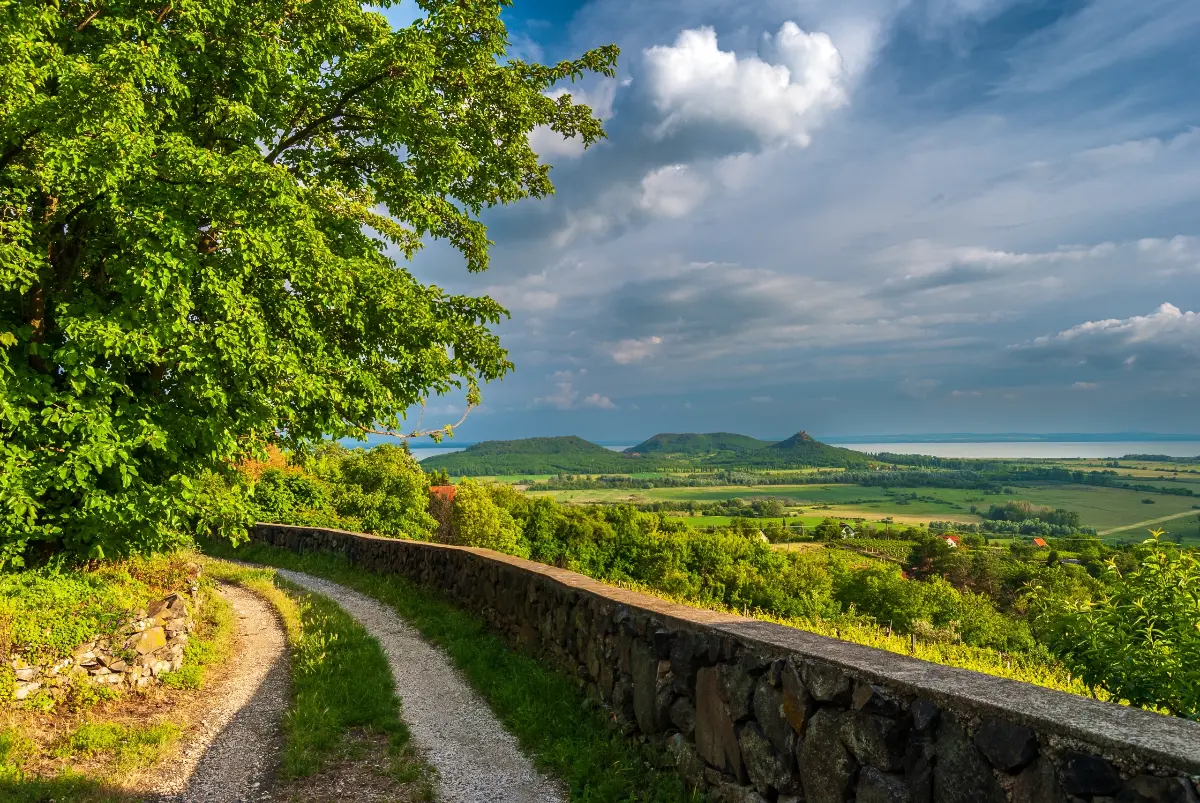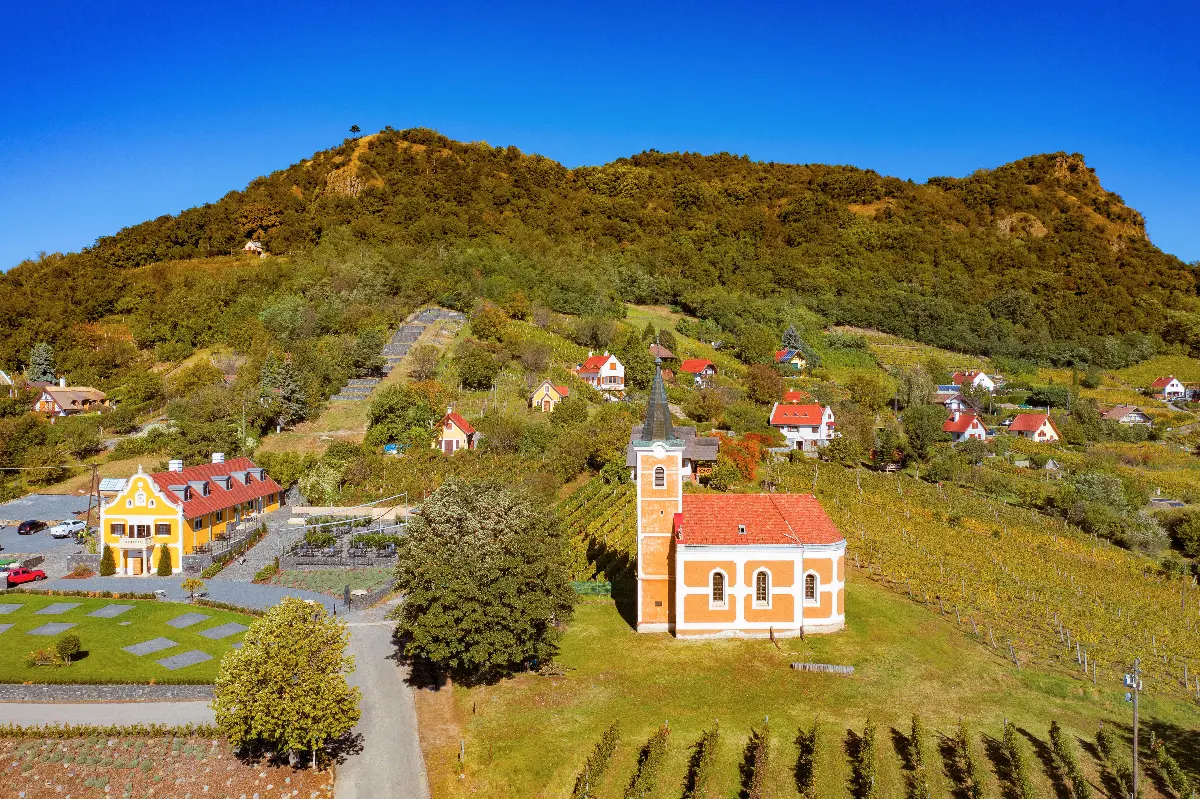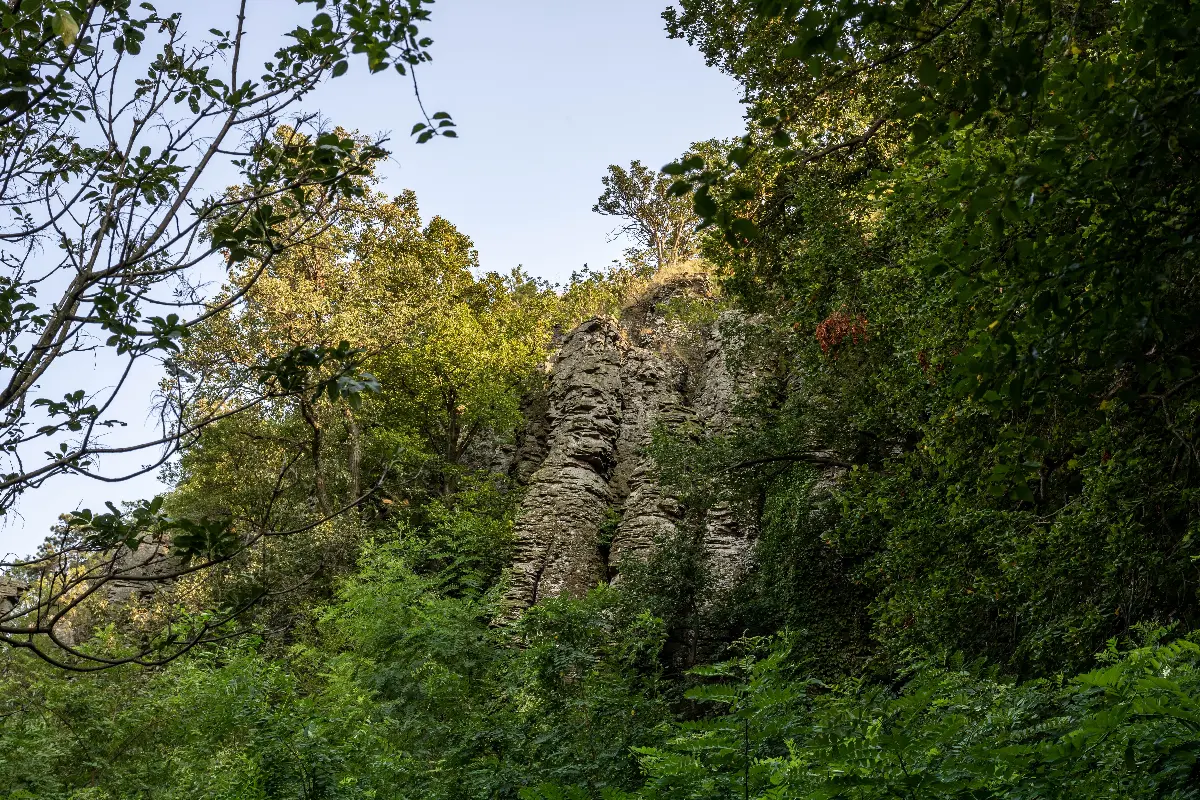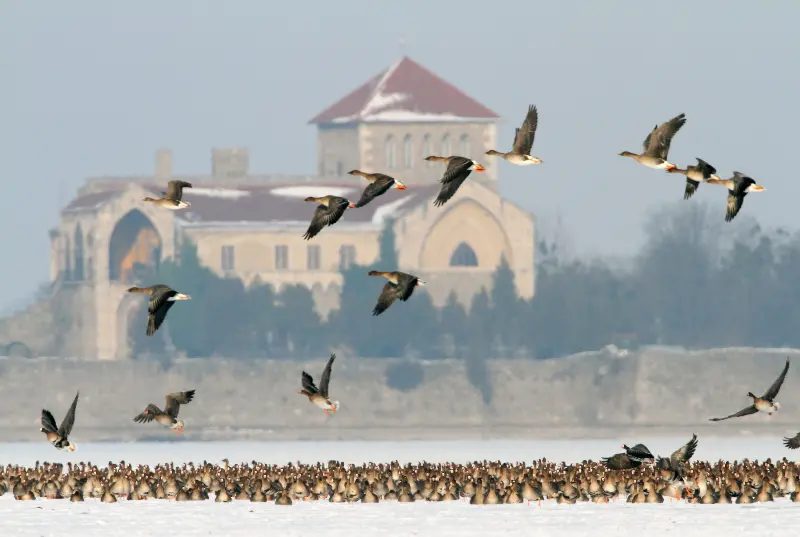
Helyszín címkék:
Land of Dragons, Treasures of St. George’s Hill
Hype&Hyper
St. George’s Hill has long been a favourite and inspiring place for foreign and Hungarian scientists, geologists, botanists, artists and poets. The French natural scientist François SulpiceBeudant noticed it during a trip to Lake Balaton in the early nineteenth century: “the most interesting of the basalt mountains is St. George’s Hill. It ends in a high peak with a steep slope, so that it resembles a fortress rising from the plain”. And this is how Éva Petrőczi, an Attila József Prize winner poet, captured the landscape and her emotions in her 1984 poem titled (in translation) Spring Poem on the St. George’s Hill:
These sunlight-sponge
house walls,
and the frightened little
saints clinging to the edge of the
yellow pillow against the wind,
show that this is
Pannonia,
and that it is in vain
to accustom myself to other landscapes:
I shall always be bound to the
tethers of this sight.

The hill, which has been inhabited by humans for a long time – it was inhabited in the later Stone Age, and Bronze Age human remains, Roman money, brick tombs and tools have been found here – is fascinating both for its natural and built heritage.
Lengyel Chapel
The hill takes its name from the Chapel of St. George, which once stood at its foot, and on its site is now the Lengyel (‘Polish’) Chapel. The building was built in 1775 upon the order of the Tóti-Lengyel family, the landlords of Szigliget, in Baroque style, while the stones of the old chapel were allegedly used to build houses and cellars in the area. Standing 215 metres high, the church is one of the most valuable sculptural monuments around Lake Balaton. There are eight stone statues in the niches of the façade and on the gable, with a carved statue of St. George slaying a dragon in the centre, a reference to the name of the hill. And the late Baroque-Rococo altar, pulpit and organ choir inside the church are even more impressive.

Örömhírvitel-kápolna (Chapel of the Annunciation)
On the eastern side, below the basalt towers, in the woods, stands the Orthodox Chapel of the Annunciation, built by the hermitage of St. George’s Hill. Born in Debrecen, Father Márton visited several monasteries in Greece and France, and as a young man, he even participated in the restoration of the Louvre – as he was a stone carver and sculptor – before settling on the mountain. He converted a press-house into a church, which he renovated and fitted out with his own hands. The interior of the chapel is decorated with depictions of Christ and the main events of his life, the eight prophets proclaiming the coming of Christ, the four evangelists, Mary and the saints.
Sárkány-lik (‘Dragon Cave’)
Of course, there are also legends associated with the hill. The most famous of these is that its stomach was once inhabited by a dragon, which, according to one version of the tale, was killed by dragon-slaying St. George when it snatched his beloved. The Dragon Cave today is actually made up of crevices that once formed from fallen basalt columns. Several groups set out in the second half of the twentieth century to explore the original cave, which is described as having a wide opening and several cavities, but it is more likely that a more extensive system of tunnels is hidden beneath the surface. Either way, the cave still exudes cool air in summer – as if the dragon’s last breath of life had frozen the air forever.

Basalt organs
The mountain is the result of the incredible shaping forces of nature: it was formed after the disappearance of the Pannonian Sea, some five million years ago. After the Pannonian Sea became blocked and its basin filled up, the Earth’s glowing magma erupted through huge fissures in the Earth’s crust. The dilute basaltic lava melted on the surface, then solidified and capped the lower layers. The columns are the result of lava cooling. The cooling lava cracked along a network of many angles, and along the cracks, frost, water and wind formed edges and corners. And the most beautiful formation, comparable to a huge organ, can be found on St. George’s Hill, from the top of which you can admire the other witness hills and Lake Balaton.






